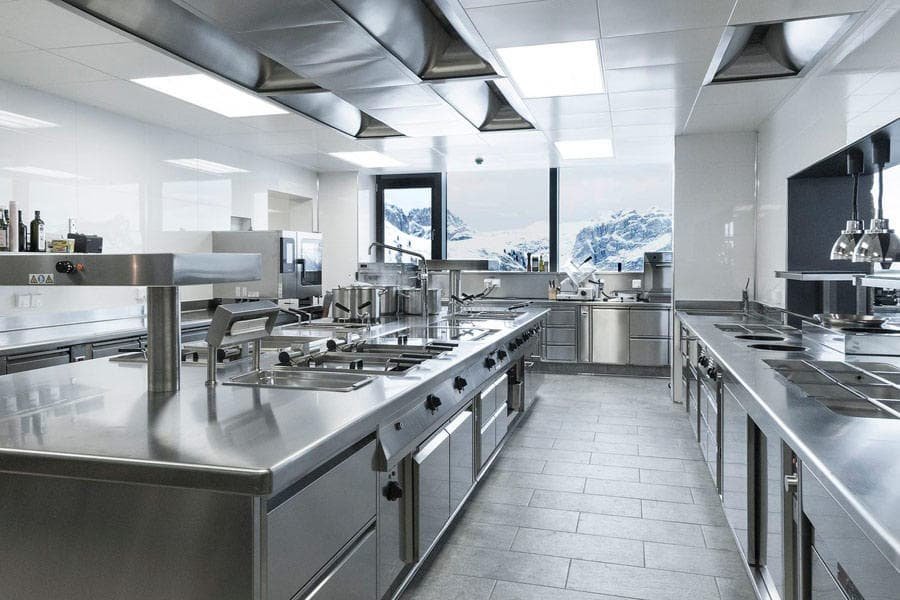In the evolving business landscape, the efficient use of space is crucial, especially when managing compact floorplans. Selecting the appropriate commercial equipment becomes a pivotal decision that can substantially influence productivity and functionality. As entrepreneurs and business owners aim to optimize every square foot, we will explore comprehensive directios on choosing the right commercial equipment for compact spaces. From grasping spatial restrictions to assessing specific operational needs, we dissect the complexities of making informed selections that enable streamlined and effective work environments.
Evaluating Space-Efficient Technologies:
Technological advancements introduce a range of space-efficient solutions to compact commercial settings. The key to harnessing the full potential of these advancements lies in comprehending effective integration strategies. For example, in a modern kitchen intended for both elegance and usefulness, the undercounter glass door fridge elegantly blends aesthetics and practicality, providing a streamlined storage solution that allows customers to exhibit and readily access their chilled products while maximizing space. Understanding how to easily integrate these space-saving technologies into current workflows enables organizations to make educated decisions that not only increase productivity but also fit with environmental objectives. As organizations work through the complexities of implementing these space-saving technologies, the emphasis is on seamless integration into current procedures. This not only involves adopting cutting-edge technologies but also restructuring processes to ensure a holistic and synergistic approach.
Evaluating Spatial Constraints:
Compact spaces necessitate meticulous examination of dimensional limitations before deciding on commercial equipment. The intricacies of these confined environments demand a meticulous examination, encompassing factors beyond mere size considerations. Comprehending the boundaries, layout obstacles and potential impediments within confined areas constitutes the first step towards optimizing available room. Moreover, understanding potential impediments within compact spaces enables businesses to proactively address challenges related to mobility, maintenance access, and the overall ergonomic design of the workspace.
Pinpointing Operation-Specific Requirements:
Individual business needs amplify the relevance of tailoring commercial equipment decisions to specialized functional demands within compact contexts. This section guides readers through a detailed process of identifying the essential performance specifications and attributes imperative for unencumbered operations. Whether food service, retail or office-based, we probe industry-specific considerations, ensuring selected equipment synergizes with commercial goals.
Prioritizing Multi-Functional Solutions:
In compact environments, versatility reigns supreme. We spotlight multi-functional commercial equipment capable of delivering operational flexibility without compromising efficiency. The ability to optimize limited space while maintaining operational efficiency is paramount for businesses operating within confined areas. In such settings, multi-functional commercial equipment emerges as the cornerstone of operational success. This adaptability not only enhances productivity but also fosters a sense of innovation and creativity among employees.
Navigating Budgetary Constraints:
Selecting fitting commercial equipment under tight spatial conditions mandates careful financial appraisals. Weigh cost-effective selections, financing vehicles and overall value considerations against quality benchmarks. Grasping long-range cost implications associated with each option proves essential for compact-space operators weighing expenditures against functionality. Beyond the initial investment, operators in compact spaces must grasp the intricacies of ongoing maintenance costs, potential upgrades, and the overall durability of the selected equipment.
Future-Proofing Compact Workspaces:
As business needs evolve, future-proofing compact facilities grows in importance. Adopting forward-looking perspectives allows organizations to safeguard equipment selections against future obsolescence as spatial needs change over time. By incorporating scalability into decision-making processes, businesses can mitigate the risk of equipment becoming obsolete or incompatible with evolving operational requirements. This proactive stance enables organizations to stay agile in the face of growth, technological innovations, and shifts in industry standards.
Conclusion:
In closing, specifying commercial equipment for compact spaces commands equally strategic and deliberative approaches balancing current and future aims. By thoroughly evaluating dimensional realities, precisely determining functional needs, optimizing versatility, capitalizing on cutting-edge offerings, minding budgetary limitations and building in scalability, business owners can cultivate highly productive and enduring compact work environments despite intrinsic space challenges. This guide illuminates key considerations, empowering informed decision making crucial to the prosperity of space-constrained ventures. Visit Nytimer for more informative blogs.




